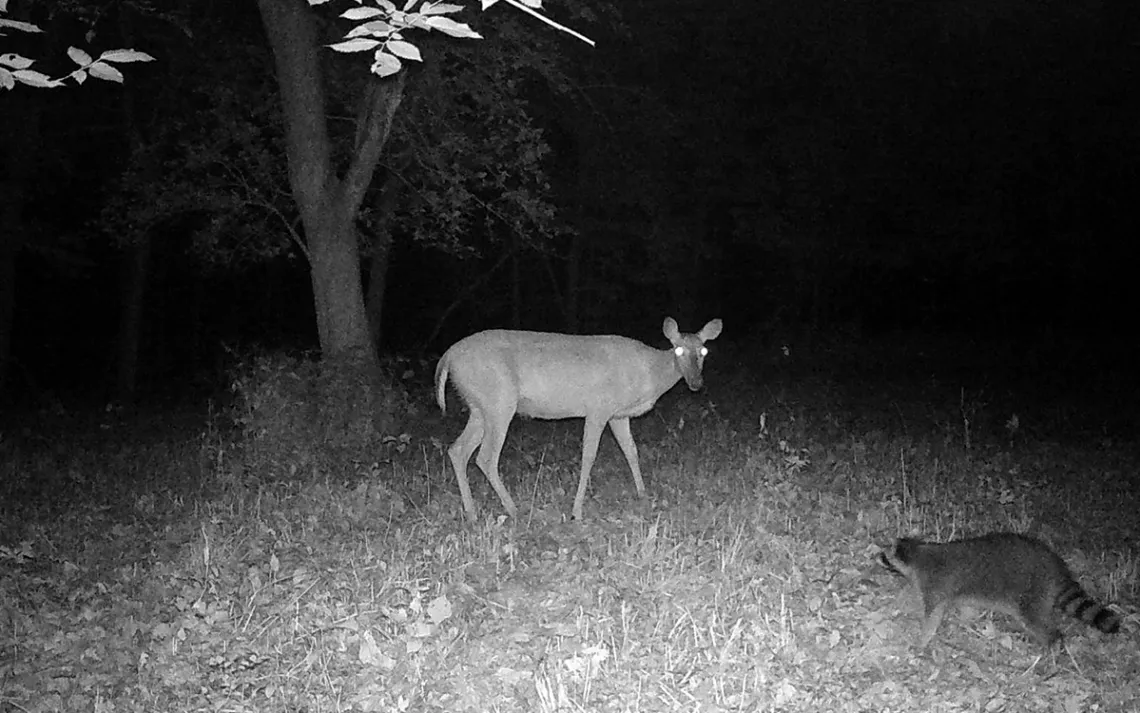Where Humans Live, Animals Get Crowded
Animals are more likely to share space in human-dominated areas, a new study says

Photo courtesy of WI DNR Snapshot Wisconsin
Humans change environments in many ways. Sometimes they kill off some species and introduce others. Sometimes they pave over wetlands and replace trees with grass. Their very presence can make some creatures avoid certain areas entirely.
Humans may also bring animals a little closer to one another in space and time, according to “Human Disturbance Compresses the Spatiotemporal Niche,” a new study published December 19 in Proceedings of The National Academy of Sciences. In the study, a team of researchers trawled through four years of wildlife photos collected by Snapshot Wisconsin, a state-wide camera trap network maintained by volunteers. The network was essential, explains Neil Gilbert, a wildlife ecologist at Michigan State University in East Lansing who worked on the study, because it’s really difficult to observe and measure those interactions in the wild. If a raccoon and a wild turkey spot each other in the forest, and there are no pics, did it even happen?
In areas with no human footprint, the researchers found, images taken by automatic wildlife cameras confirmed that many animals prefer to stick to themselves. Turkeys may flock together in front of a camera trap one day, but another animal—squirrel, deer, or coyote—might not trigger a camera again in the same location until days later.
Nevertheless, the trap photos revealed some direct encounters. “My favorite one … there's just a deer kicking an opossum in the face,” Gilbert says. (Neither deer nor opossum were available for comment.)
Scanning through the data, Gilbert and his colleagues showed that in parts of Wisconsin that were more than three miles away from agriculture or housing, camera shutters clicked once every six days on average. But in places where human disturbance was high, cameras caught animals passing once every four days.
The study estimates that about two-thirds of the increased meeting frequency is because areas that humans live on, or farm, can sustain more animals. Humans offer many food opportunities that animals can take advantage of—from trash cans for curious raccoons to cornfields and gardens for deer. Places with lots of people, Gilbert notes, also tend to be ones with fewer large predators.
More animals sharing space could mean more meetings between those animals —and potentially deadly ones. That could increase stress on wildlife, even if one party doesn’t end up as another’s dinner. “If you're something like a cottontail [rabbit] or squirrel or something, predation risk is this really real force in your life,” Gilbert says. In human-disturbed places, the study estimates that predator and prey will run into each other seven times more often than they might in the wilderness. Those more frequent encounters also offer more opportunities for diseases to spread.
That said, wildlife camera paparazzi shots aren’t definitive proof of these hypotheses. Because the cameras are only passively taking photos when an animal crosses their path, there isn’t direct evidence that different species are actually confronting each other more often, or that those encounters lead to more stress, says Michael Cove, a mammalogist at the North Carolina Museum of Natural Sciences in Raleigh. For that, he noted, scientists will need to track individual animals, rather than individual locations, to find out whether what happens in the woods really stays in the woods.
 The Magazine of The Sierra Club
The Magazine of The Sierra Club



